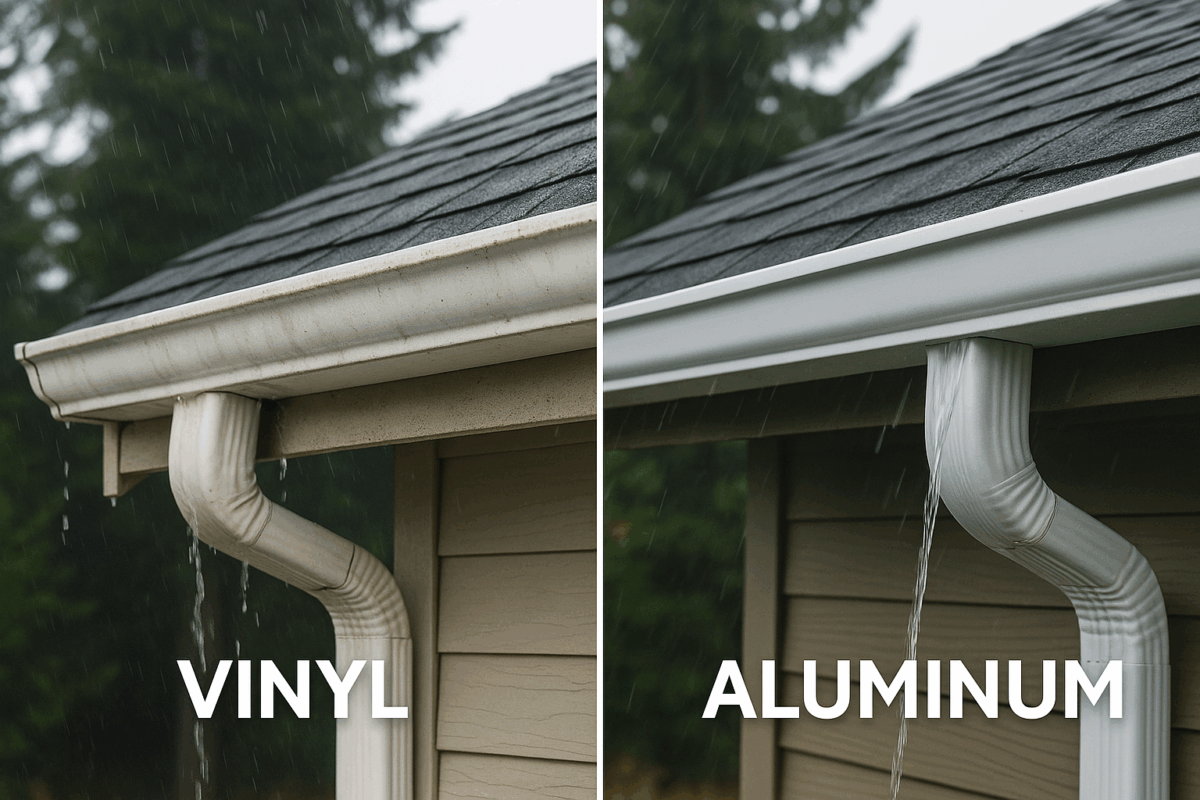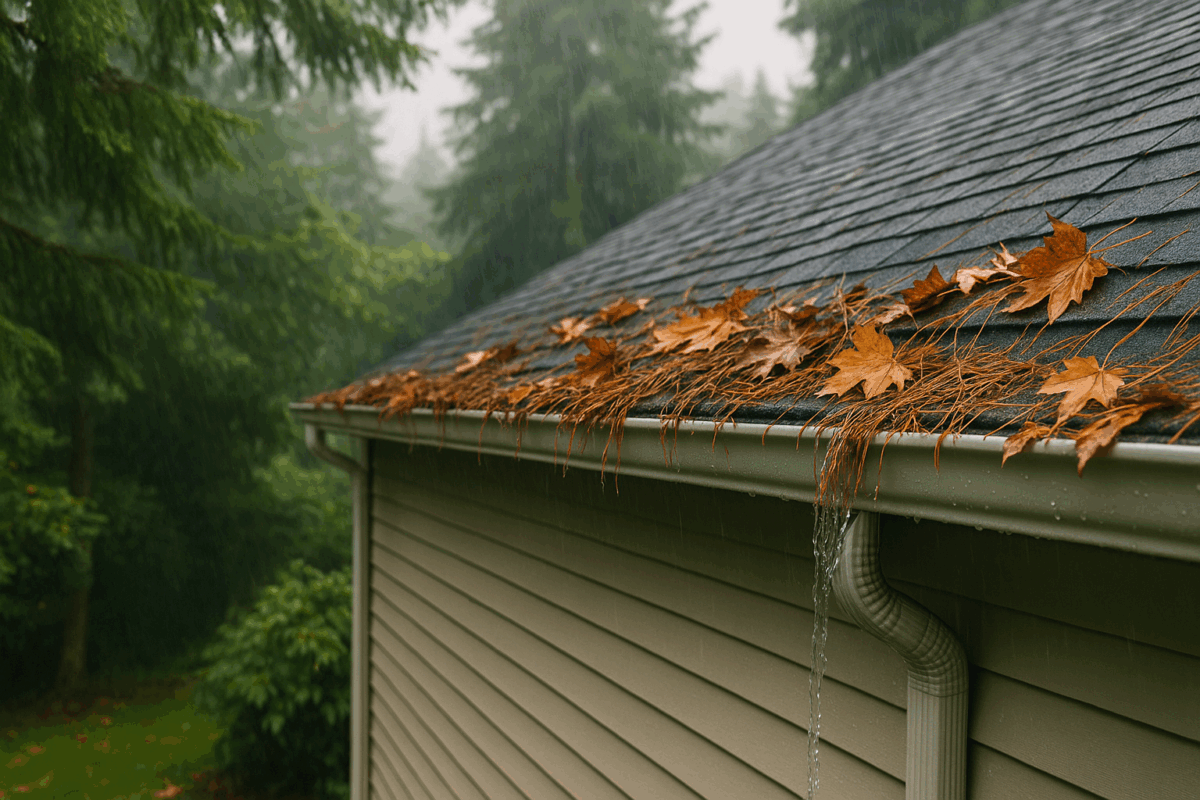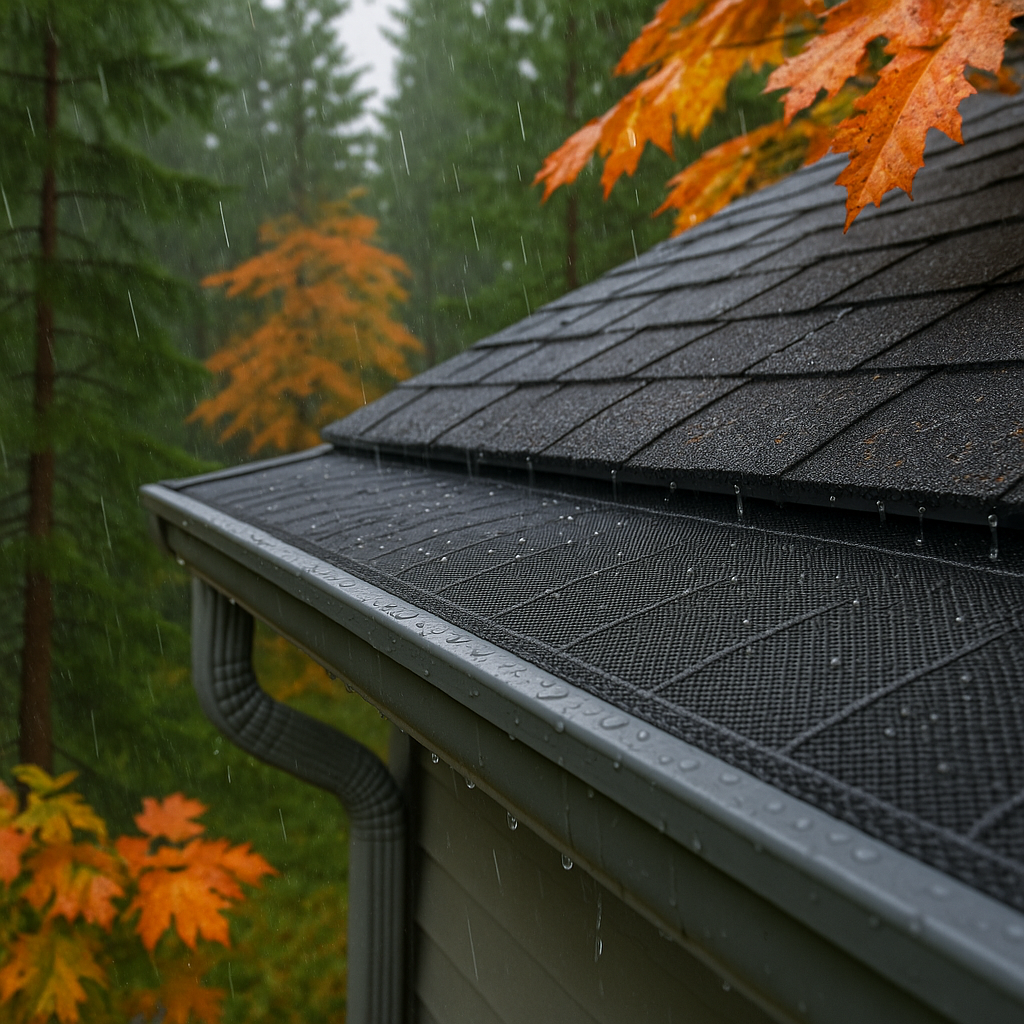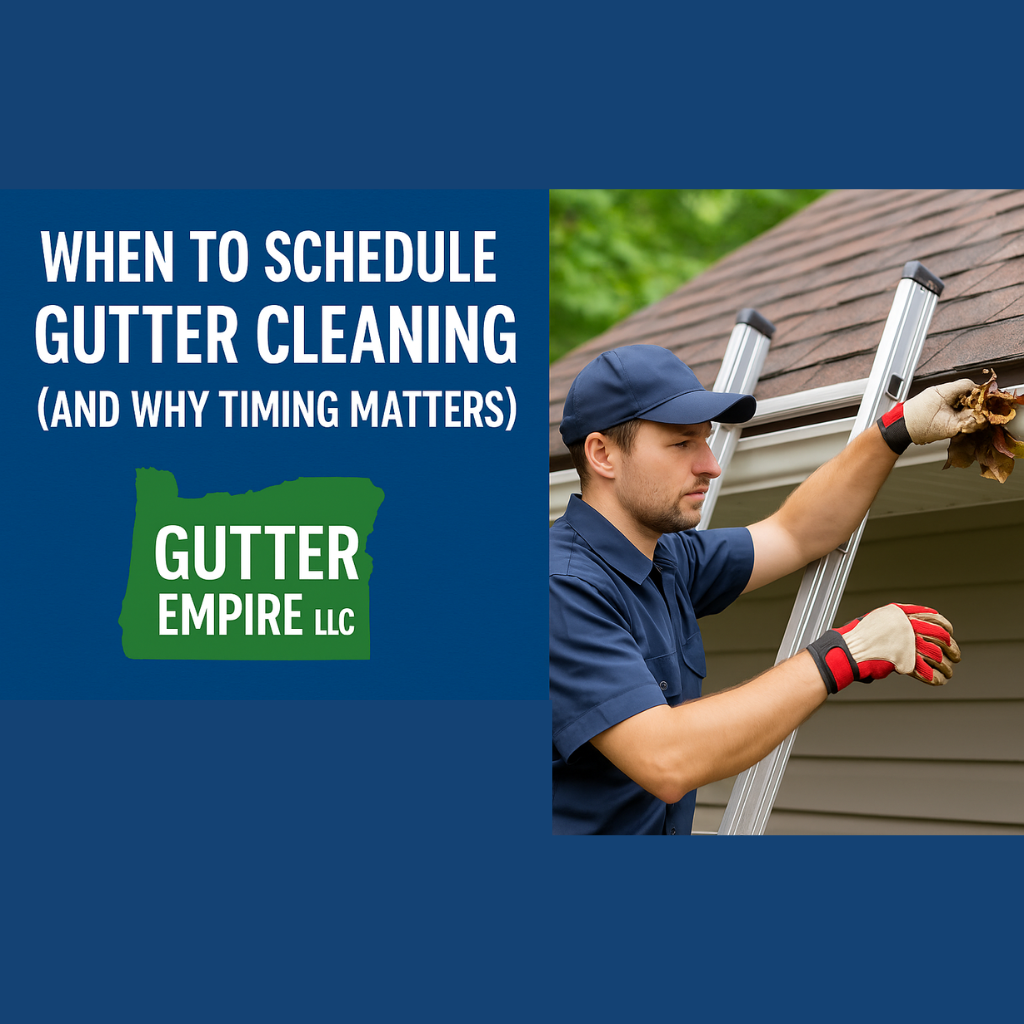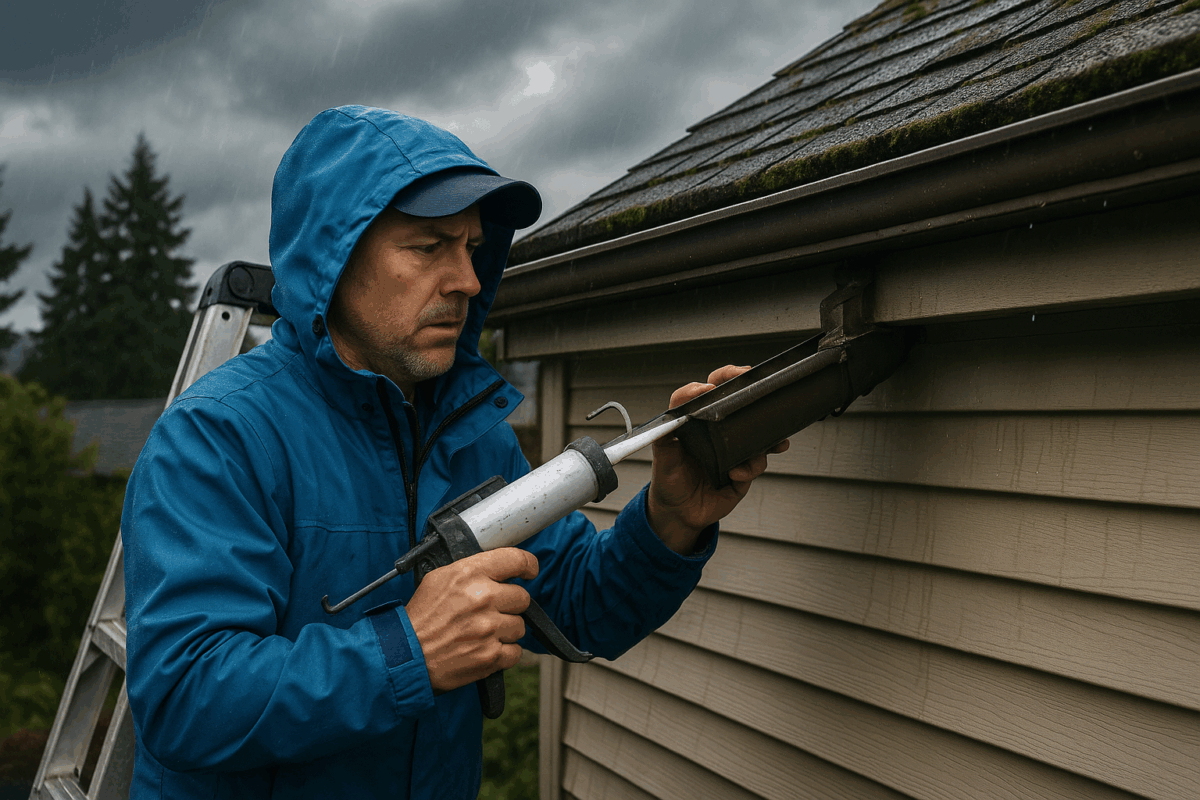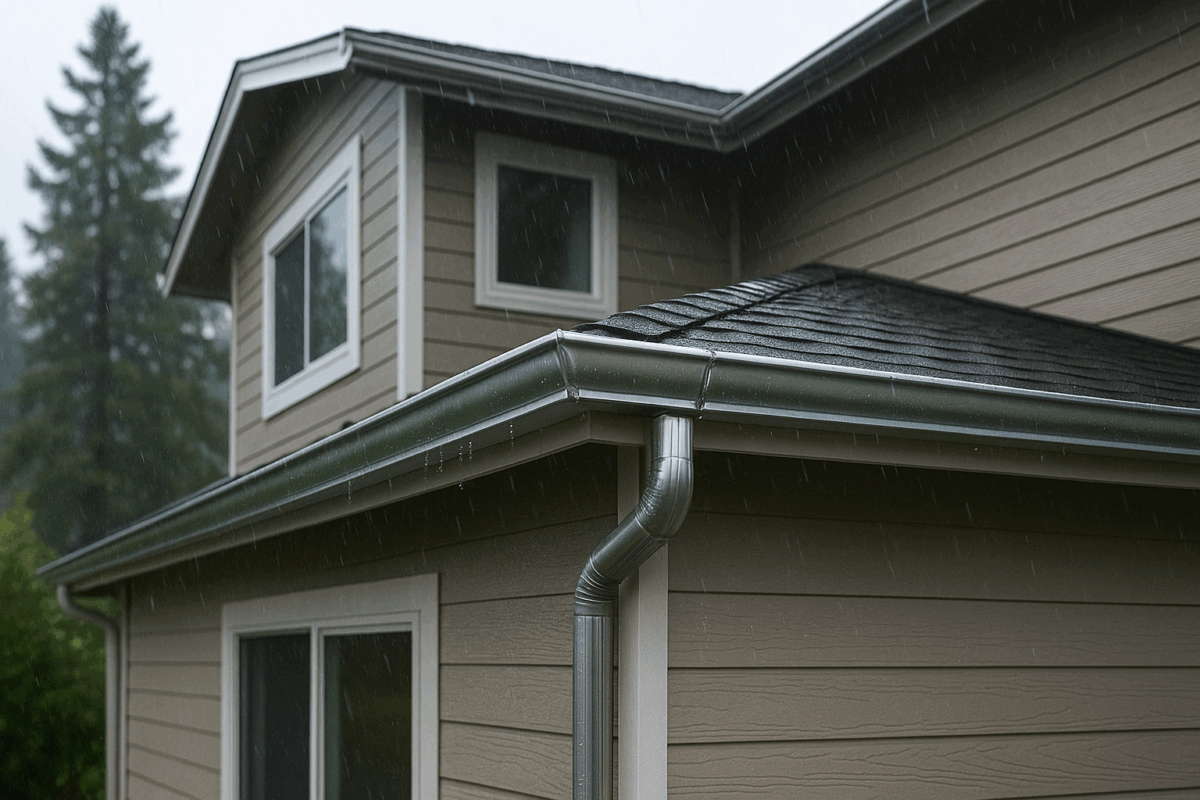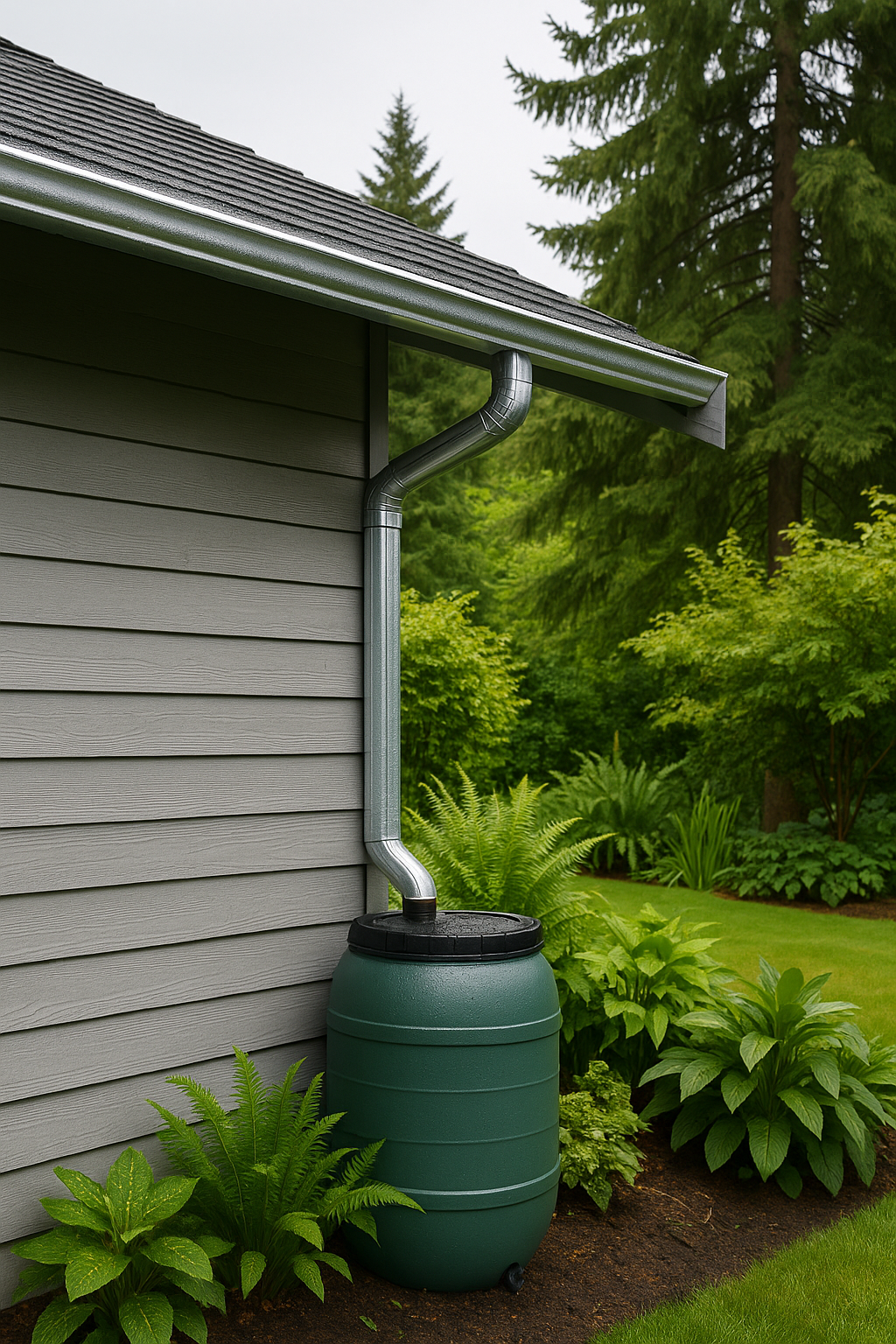Oregon homes deal with a kind of rain that does not really give you a break. It comes in long stretches, sometimes gentle and sometimes heavy, but almost always steady.
When a home’s gutters are installed incorrectly or not maintained properly, that constant moisture runs down the siding instead of being carried away. Over time, that water leads to bubbling, cracking, and eventually peeling paint. It is one of those problems people notice too late, usually when the damage is already spreading.
This is where a closer look at gutter installation, slope, alignment, and long-term protection becomes important. You cannot fight a climate like Oregon’s with guesswork. You need gutters that move water the right way every single time it rains.
The Installation Mistakes That Send Water Down Your Siding
When people hear “bad gutters,” they usually imagine leaves or clogs. But the real trouble often starts on day one, when the gutters are installed without the right slope, placement, or support. A few small mistakes might not seem like much, but they can change the way water flows off the roof.
Common Installation Errors
- Incorrect pitch: Gutters look level to the eye, but they are supposed to drop about a quarter inch every 10 feet. Without that pitch, water just sits there or spills over.
- Loose or widely spaced hangers: This causes sagging, which slowly pulls the gutter away from the fascia.
- Too few downspouts: Gutters fill faster than they can drain, forcing water to pour over the edges.
- Runs that tilt toward the house: This is one of the worst scenarios because the overflow goes straight onto the siding.
These issues turn a home into a waterfall during storms. Instead of collecting water and directing it safely away, the system forces it down the face of the house. That is exactly how paint damage begins, and it is why proper gutter installation matters so much in wet climates like ours.
If these problems are already showing, it may be time for gutter repair or even full gutter replacement, depending on how severe the warping or misalignment is.
How Overflowing Gutters Lead to Bubbling, Cracking, and Peeling Paint
Overflowing gutters push water down the siding, and the paint reacts pretty quickly. Small bubbles show up first, almost like the surface is struggling to release trapped moisture. As the wood stays damp, the paint’s grip weakens. It starts cracking in thin lines, then peeling in bigger pieces as the wall keeps absorbing more water after every storm.
You can repaint the area as many times as you want, but if the underlying moisture problem persists, the new paint will eventually fail, too. Water always finds the same path down the wall. Oregon’s long wet spells make it even harder because the wood never fully dries between storms.
Sometimes the damage spreads underneath window trim or near doors, especially if gutters overflow from the upper roofline. These areas take longer to dry and can become soft or discolored over time.
Continuous Moisture, Mold Growth, and Structural Deterioration
Paint failure is not the only thing happening. Behind those peeling layers, the wood starts to absorb more moisture. Once the siding or trim swells, mold usually follows. Mold only needs one thing to start growing: moisture, and overflowing gutters create the perfect environment.
The danger is not only the mold itself but what it means: the wood stays wet for days at a time. That leads to rot, softness, and eventually full deterioration of the fascia or sheathing. Wet walls and trim also attract insects, which see softened wood as an easy entry point.
Water damage does not stay small for long. That is why homeowners who notice early paint problems should also check their gutters. Fixing the moisture source matters more than touching up the surface.
Why Seamless Aluminum Gutters Offer Better Protection in Oregon
Once you understand how gutter failures cause paint and siding problems, the next question becomes obvious: What kind of gutter system holds up in this environment? Many Oregon homes now use seamless gutters, and for good reason.
These gutters are made from a single continuous piece of metal, usually aluminum, and shaped on-site to match the exact length of each roofline. Fewer seams mean fewer places for water, rust, or leaks to get in. Aluminum doesn’t rust, which is important because gutters are exposed to rain for months at a time every year.
Another big advantage is the ability to maintain a consistent pitch. Since seamless gutters fit the home precisely, installers can control the slope from end to end without awkward joints or adjustments. When done correctly, water flows smoothly toward the downspouts rather than pooling or spilling out of the gutter.
If a system is too damaged to fix, upgrading to these stronger, custom-fitted options through gutter replacement is often a better long-term choice.
When Installation Isn’t Enough: The Role of Maintenance and Repair
Even the best gutter system needs basic care. Oregon trees shed needles, leaves, and debris year-round. When that buildup clogs a downspout, the gutter behaves as if it were misaligned, even if the installation was perfect.
Sometimes, homeowners think the siding is failing when the real problem is a section of gutter that has sagged under debris or ice. Regular rain gutter repair and cleaning prevent those issues from turning into bigger problems. It keeps the water flowing in the direction it is supposed to go, instead of spilling down the walls.
This is where professional installers make a difference. A trained team can see whether the overflow is caused by pitch issues, hanger spacing, clogged outlets, or older materials that simply cannot hold up anymore. Fixing the right problem saves time, paint, and repairs down the line.
Protect Your Home From Moisture Damage With a Professional Gutter System
Peeling paint might look like a simple cosmetic issue, but it almost always leads back to water. In Oregon’s climate, that water usually comes from gutters that are overflowing, sagging, or installed without the right slope. When moisture repeatedly hits the same parts of your siding or trim, the damage builds faster than people expect.
If you want help protecting your home from long-term water damage, we can inspect your current system and install durable, seamless aluminum gutters. We also handle gutter repair and replacement when needed.
Contact us at (971) 777-9899 to schedule your evaluation, or get a free estimate here with Gutter Empire LLC.
Key Takeaways (with citation)
- Improper gutter installation—especially incorrect slope, poor placement, and loose hangers—is one of the main reasons Oregon homes develop peeling paint and moisture damage along exterior walls. Properly installed gutters should be pitched slightly toward downspouts so water never sits or spills over the edge.[1]
- Overflowing gutters send a steady stream of water down siding, which leads to bubbling, cracking, and peeling paint as moisture gets trapped in the wood beneath. Once the substrate is saturated, even fresh coats of paint will eventually fail again if the drainage issue isn’t fixed at the source.
- Chronic overflow doesn’t just ruin paint—it also encourages mold growth, wood rot, and insect activity in fascia boards, trim, and sheathing. Over time, this can turn a simple cosmetic issue into structural deterioration that requires carpentry and extensive repainting.
- Seamless aluminum gutters offer stronger long-term protection in Oregon’s wet climate because they are custom-formed on site, have fewer leak-prone seams, and won’t rust under months of rain exposure. Keeping a consistent pitch along each run helps ensure water flows toward downspouts instead of pooling.[1]
- Even a well-installed gutter system needs regular cleaning and occasional rain gutter repair to keep debris from causing sagging, clogs, and overflow that can damage siding and paint. Professional inspection helps pinpoint whether problems stem from installation errors, worn materials, or simple maintenance issues.
Citation
[1] The Home Depot. How to Install and Replace Rain Gutters. https://www.homedepot.com/c/ah/how-to-install-and-replace-rain-gutters/9ba683603be9fa5395fab9019cce4fcd


